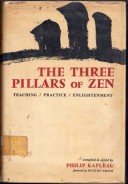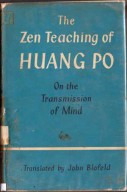Tìm Sách
Sách tiếng Anh-English >> The Heart of Buddhist Meditation
Thông tin tra cứu
- Tên sách : The Heart of Buddhist Meditation
- Tác giả : Nyanaponika Thera
- Dịch giả :
- Ngôn ngữ : Anh
- Số trang : 217
- Nhà xuất bản : Ride & Company London
- Năm xuất bản : 1962
- Phân loại : Sách tiếng Anh-English
- MCB : 1210000003587
- OPAC :
- Tóm tắt :
INTRODUCTION
The Heart of Buddhist Meditation
The purpose of these pages is to draw attention to the far- and deep-reaching significance of the Buddha’s ‘Way of Mindfulness’ (Satipatthana), and to give initial guidance to an understanding of these teachings and their practical application.
This book is issued in the deep conviction that the systematic cultivation of Right Mindfulness, as taught by the Buddha in his Discourse on Satipatthãna, still provides the most simple’ and direct, the most thorough and effective, method for training and developing the mind for its daily tasks and problems as well as for its highest aim: mind’s own unshakable deliverance from Greed, Hatred and Delusion.
The teachings of the Buddha offer a great variety of methods of mental training and subjects of meditation, suited to the various individual needs, temperaments and capacities. Yet all these methods ultimately converge in the ‘Way of Mindfulness’ called by the Master himself ‘the Only Way’ (or: the Sole Way; ekayano maggo). The Way of Mindfulness may therefore rightly be called ‘the heart of Buddhist meditation’ or even ‘the heart of the entire doctrine’ (dhamma-hadaya). This great Heart is in fact the centre of all the blood streams pulsating through the entire body of the doctrine (dhamma-kaya).
The scope of the Satipatthana Method
This ancient Way of Mindfulness is as practicable to-day as it was 2,500 years ago. It is as applicable in the lands of the West as in the East; in the midst of life’s turmoil as well as in the peace of the monk’s cell.
Right Mindfulness is, in fact, the indispensable basis of Right Living and Right Thinking everywhere, at any time, for everyone. It has a vital message for all: not only for the confirmed follower of the Buddha and his Doctrine (Dhamma), but for all who-endeavour to master the mind that is so hard to control, and who earnestly wish to develop its latent faculties of greater strength and greater happiness.
In the first words of the Discourse, stating its high purpose, it is said that this method makes ‘for the overcoming of sorrow send misery for the destruction of pain and grief’. Is not that just what everyone wishes for? Suffering is the common human experience, and, therefore, a method for radically conquering it, is of common human concern. Though the final victory over Suffering may, in the individual case, still be far off, the road to it has been clearly indicated. And more than that: from the very first stages of that road, the method of Right Mindfulness will show immediate and visible results of its efficacy, by defeating Suffering in many a single battle. Such practical results, in terms of happiness, must be of vital importance to everyone, in addition to the efficient help given to mental development.
The true aim of Satipatthãna is nothing less than final Liberation from Suffering which is also the highest goal of the Buddha’s teaching—Nibbãna. The straight and direct path towards it, as provided by Satipatthãna, and a continuous progress on that path, require, however, sustained meditative effort, applied to a few selected objects of Mindfulness. Brief initial instructions in that practice will be given in these pages.
But, for striving after that highest goal, a general application of Mindfulness, on the level of the normal life activities, is of no less importance. It will give invaluable support to the effort in specialized and intensified Mindfulness. It will further instil in minds still untrained, the general ‘mood’ and attitude of Mindfulness, and give familiarity with its ‘mental climate’. Its beneficial results, in a narrower and ‘worldly’ field, will be an additional inducement to extend the range of application, and will be an encouragement to take up the systematic practice aiming at the highest goal. For these reasons, special attention has been given here to the general aspects of Mindfulness, i.e. its place in the fabric of human life in general.
In Satipajthana lives the creative power as well as the timeless and universal appeal of a true doctrine of Enlightenment. It has the depth and the breadth, the simplicity and the profundity for providing the foundation and the framework of a living dhamma for all, or, at least, for that vast, and still growing, section of humanity that is no longer susceptible to pseudo-religious sedatives, and yet feel, in their lives and minds, the urgency of fundamental problems of a non-material kind calling for solution that neither science nor the religions of faith can give. For the purpose of such a satipatthãna dhamma for all it is essential to work out, in detail, the applications of this method to modern problems and conditions. Here, within the limits of these pages, only brief indications can be given in that respect (see, in particular, pp. 79f). Elaboration and additions must be left to another occasion or to other pens.
For the benefit of those, particularly in the West, who are not well acquainted with Buddhist literature, some information follows here, about the relevant texts on which the ancient tradition of Satipatthana is based.
The Discourse, its title, and the Commentary
The Buddha’s original ‘Discourse on the Foundations of Mindfulness’ (Satipatthana Sutta) occurs twice in the Buddhist scriptures: (i) as the 10th Discourse of the ‘Middle Collection of Discourses’: (Majjhima Nikãya), (2) as the 22nd Discourse of the ‘Long Collection’ (Digha Nikãya) where it has the title Mahã-Satipatthana Sutta, i.e. the Great Discourse, etc. The latter differs from the first version only by a detailed treatment of the Four Noble Truths, included in that section of the ‘Contemplation of Mental Contents’ which deals with them. In the present publication, the second and larger version has been reproduced (as Part Two), and, in the following, it will be briefly referred to as ‘the Discourse.
The title.—In the compound Pali term ‘sati-patthãna’, the first word, sati (Sanskrit: smrti), had originally the meaning of ‘memory’, ‘remembrance’. In Buddhist usage, however, and particularly in the Pali scriptures, it has only occasionally retained that meaning of remembering past events. It mostly refers there to the present, and as a general psychological term it carries the meaning of ‘attention’ or ‘awareness’. But still more frequently, its use in the Pali scriptures is restricted to a kind of attentiveness that, in the sense of the Buddhist doctrine, is good, skilful or right (kusala). It should be noted that we have reserved the rendering ‘mindfulness’, for this latter use only. ‘Sati’ in this sense, is the seventh factor of the Noble Eightfold Path, under the name of Sammã-sati, i.e. Right Mindfulness, being expressly explained as the fourfold ‘Foundations of Mindfulness’ (Satipatthãna).
The second part of the compound, patthana stands for upatthana, lit. ‘placing near (one’s mind)’, i.e. keeping present, remaining aware, establishing. This expression, in various grammatical forms, is frequently used in connection with ‘sati’, e.g. in our Discourse, satim upatthapetva, lit. ‘having kept present his mindfulness’. Moreover, in the Sanskrit version which probably is very old, the title of the Discourse reads Smrti-upastkãna-sũtra. According to that explanation, the complete word may be rendered by ‘The Presence of Mindfulness’.
Among alternative ways of interpreting the title, the Commentary mentions that the four objects or contemplations (body, etc.), dealt with in the Discourse, are the ‘principal place’ (padhãnam thãnaih) or the ‘domain proper’ (gocara) of Mindfulness; this suggests a rendering ‘The Domain of Mindfulness’ or ‘The Foundations of Mindfulness’, and this latter translation has been adopted here.
It is, however, desirable that the Pali word ‘Satipatthãna’ itself should become familiarized among Western readers of Buddhist literature, as in the case of such terms as Kamma (Karma), Dhamma, etc.
The Commentary to the Discourse is included in the old exegetical works on the two aforementioned canonical collections in which our text occurs. These commentaries, at least in their substance, date, almost certainly, back to the very earliest time of the Doctrine. The complete original, however, of all the old commentaries to the Buddhist Pali Canon was no longer extant in the fourth century A.G. The version we possess now is a retranslation, and partly perhaps a recasting into the Pali language, from the early Sinhalese version that was found in Ceylon. This rendering into Pali was done by the great scholar and commentator of the fourth century A.C., Buddhaghosa, who, besides some illustrative stories, probably added not much more than a few comments of his own to those already in the Ceylon tradition.
Since there exists a faithful English translation of that Commentary, by the late Venerable Soma Mahathera of Ceylon (d. i960), it was considered unnecessary to duplicate here this material in full. It has, however, been utilized in the explanatory notes to the Discourse, and a few passages of general interest taken from that Commentary have been included in the Anthology which forms Part Three of this book.
To those, however, who wish to acquaint themselves with the full exegetical material concerning our Discourse, the study of the Commentary in the Venerable Soma’s translation will be very rewarding. Apart from its direct relevance to our subject, the Commentary contains a wealth of information about various important Buddhist teachings, and, besides, a number of stirring stories showing the determined and heroic manner in which the Only Way was trodden by the monks of old, and giving instructive glimpses into details of their practice.
Satipatthana in Eastern tradition
No other Discourse of the Buddha, not even his first one, the famous ‘Sermon of Benares’, enjoys in those Buddhist countries of the East which adhere to the unadulterated tradition of the original teachings, such popularity and veneration as the Satipatthãna Sutta.
In Lanka for instance, the isle of Ceylon, when on fullmoon days pious lay devotees observe eight of the ten principal precepts of novice monks, staying for the day and the night in a monastery, they frequently choose this Sutta to read, recite, listen to, and contemplate. Still, in many a home, the Satipatfhana book is reverently wrapped in a clean cloth, and from time to time, in the evening, it is read to the members of the family. Often this Discourse is recited at the bedside of a dying Buddhist, so that in the last hour of his life, his heart may be set on, consoled and gladdened by the Master’s great message of liberation. Though ours is an age of print, it is still customary in Ceylon to have new palm-leaf manuscripts of the Sutta written by scribes, and to offer them to the library of a monastery. A collection of nearly two hundred such manuscripts of the Satipafthana Sutta, some with costly covers, was seen by the writer in an old monastery of Ceylon.
Such great veneration paid to a single canonical text may partly be ascribed to the fact that the Satipatthana Sutta is one of the very few Discourses which the Master himself marked out, by introducing and concluding them in a particularly emphatic and solemn way. But this alone would not be sufficient to explain the persistence, through thousands of years, of such singular veneration. It must be attributed also to the effects of a long and successful practice of the Way, throughout twenty-five centuries, which has enhaloed the Sutta, as it were, with an aura of power that inspires deep reverence.
May this Undying speech of the Buddha continue to wield its beneficial power, even far from the place and time of its origin, in the Western hemisphere! May it be a bridge between the races, by pointing to the common roots of human nature and to a common future of an ennobled mind’s mastery over human destiny!
The Anthology
Having now introduced to the reader the first two parts of this book—the essay and the Basic Text—it remains to add a few words about the Third Part in which additional Buddhist texts relevant to the Way of Mindfulness have been collected.
These texts will offer to the earnest student supplementary explanations of the Discourse and will present aspects and applications of Satipatthana which received only passing mention, or none, in the first two parts. This anthology is firstly intended as a source book on its subject; but beyond its informative purpose it is hoped that it will serve as a book of contemplation to which the reader will return again and again for fresh inspiration.
The major part of these texts has been taken from the Pali Canon of the Theravãda school, in which the oldest and most faithful tradition of the Buddha’s teachings has been preserved. From the Discourse Collection (Sutta Pitaka) of that Canon, it was in particular the Samyutta-Nikaya (The Kindred, or Grouped, Sayings) that proved a rich source of texts on Sati- patthãna: firstly in the Group named after the latterj the Satipatthana-Samyutta; in the Anuruddha-Samyutta, named after that great Arahant who was an eminent practiser of Satipatthana; and finally, in the Salayatana-Samyutta, the Group of texts on the Six Sense-bases, which contains much valuable material on the development of insight (vipassanã) into the basic cognitive processes.
Though the emphasis of this selection is on the Theravãda literature, it would have been an omission if the beautiful echo evoked by Satipatthãna in the early Mahayãna literature would not be heard here, along with the voices of the original Buddha Word. The early Mahãyãna Sutras are represented here by extracts taken from Santideva’s anthology, the Siksa-samuccaya. These extracts and also Sãntideva’s own masterly work, the Bodhicaryãvatãra, show how deeply he appreciated the importance of Mindfulness in the framework of the Teaching. Some of Santideva’s succinct and beautiful formulations may well be regarded as classic, and should be often remembered by those who walk the Way of Mindfulness.
If that high value placed on Mindfulness and Satipatthãna in the early Mahãyãna literature is not allowed to be a mere historical remnant, but becomes an active force in the life and thought of the followers, it may well fashion a strong and close link of common spiritual endeavour between Mahãyãna and Theravãda, relegating to the background the differences between these two schools. To contribute to that end is one of the reasons for including here the section on Mahãyãna which, by one more familiar with that literature, can certainly be increased considerably.
Two facts, however, must be remembered in this connection. Firstly: as the Master himself says so emphatically in the Discourse, the attainment of final deliverance from suffering (Nibbãna) is the ultimate aim and inherent power of Satipatthana. But an earnest follower of the Mahãyãnic Bodhisattva Ideal who, with full awareness of the implications, vows to aspire after Buddha-hood, ceases thereby to strive after individual deliverance before he has achieved his lofty aspiration. Consequently, he will have to avoid the application of Satipatthana to the methodical development of Insight (vipassana) which may well lead him, in this very life, to a stage (‘Stream-entry’ or Sotãpatti) where final deliverance is irrevocably assured, at the latest after seven existences; and this would, of course, put an end to his Bodhisattva career. Such restraint imposed on the full practice of Sati-patthana creates a rather strange situation from the view point, of Theravãda and in the light of the Buddha’s own injunction. But be that as it may, there is no doubt that he who is determined to walk the arduous road to Buddhahood will require a very high degree of mindfulness and clear comprehension, of keen awareness and purposefulness, if he wishes to acquire, maintain and develop, in the midst of life’s vicissitudes, those high virtues, the Perfections or Pãramis, which are the requisite conditions of Buddhahood. And in that endeavour he will be, for a lpng stretch of the road, the companion of his Theravãda brother. In his final effort for Enlightenment and’ ultimate emancipation, he will, of course, have to reach the summit of Insight (vipassanã) through the Only Way of fully developed Satipatthãna. This is the road that all Liberated Ones have gone and will go, be they Buddhas, Pacceka-Buddhas or Arahants (see the stanza in Part III, Text i).
Among the Mahãyãna schools of the Far East, it is chiefly the Chinese Ch’an and Japanese Zen that are closest to the spirit of Satipatthãna. Notwithstanding the differences in method, aim and basic philosophical conceptions, the connecting links with Satipatthana are close and strong, and it is regrettable that they have hardly been stressed or noticed. In common are, for instance, the direct confrontation with actuality (including one’s mind), the merging of every-day life with the meditative practice, the transcending of conceptual thought by direct observation and introspection, the emphasis on the Here and Now. The follower of Zen will, therefore, find much in Theravada’s presentation and practice of Satipatthãna that can be of direct help to him on his own path. Since the literature on Zen has grown considerably in the West, it would have been repetitive to include here illustrative texts often reproduced elsewhere.
For reasons of space, the author has refrained from adding to the anthology voices from the West, old and modem, which give independent testimony of the importance of Mindfulness for the basic structure and future evolution of the human mind.
Concluding Remarks
The first part of this book, The Heart of Buddhist Meditation, together with the shorter version of the Discourse, was published in Ceylon in two editions (Colombo 1954 & 1956, ‘The Word of the Buddha Publishing Committee’). In the present edition, apart from several minor additions and changes, a new chapter on ‘Mindfulness of Breathing’ (Ch. 6) has been included. The shorter version of the Discourse was replaced by the longer one which, with its detailed explanation of the Four Noble Truths, embodies the essence of the Buddha’s Teachings.
A shorter German version of the first part (without chapters 5 and 6) was also included in the author’s Satipatthana, Der Heilsweg buddhistischer Geistesschulung, issued iri 1950 by Verlag Cknstianiy Konstanz. The same publishing house also issued a German version of the anthology, under the title Der einzige Weg (Konstanz 1956) from which the present English edition differs by a few added and a few omitted texts. The author’s thanks are due to his German publisher, Dr. Paul Ghristiani, for his kind permission to use this copyright material in an English version. He also expresses his appreciation of the keen interest taken by Dr. Christiani in the promotion of Buddhist literature in Germany.
It is heartening to find that there is a growing interest in meditation in the East as well as in the West, and that it comes, at least partly, from a genuine inner need. It is hoped that the present book will be helpful to many, in many lands, who wish to develop the human mind’s potential for greater calm and strength, for a more penetrative awareness of reality, and finally, for its unshakable deliverance from Greed, Hatred and Delusion.
The Forest Hermitage
Kandy, Ceylon NYANAPONIKA THERA
CONTENTS
Introduction
PART ONE – THE HEART OF BUDDHIST MEDITATION
- The Way of Mindftdness. Significance, Methods and Aims
- Mindfulness and Clear Comprehension
- The Four Objects of Mindfulness
- Culture of Mind
- The Burmese Satipatthana Method
- Mindfulness of Breathing (Anãpãna-sati)
PART TWO – THE BASIC TEXT
PART THREE – FLOWERS OF DELIVERANCE
An Anthology of Texts dealing with Right Mindfulness
Source References
Pali and Sanskrit (Glossary)
General Index
 Facebook
Facebook
 Google
Google
 Google+
Google+
_thumb.jpg)

















